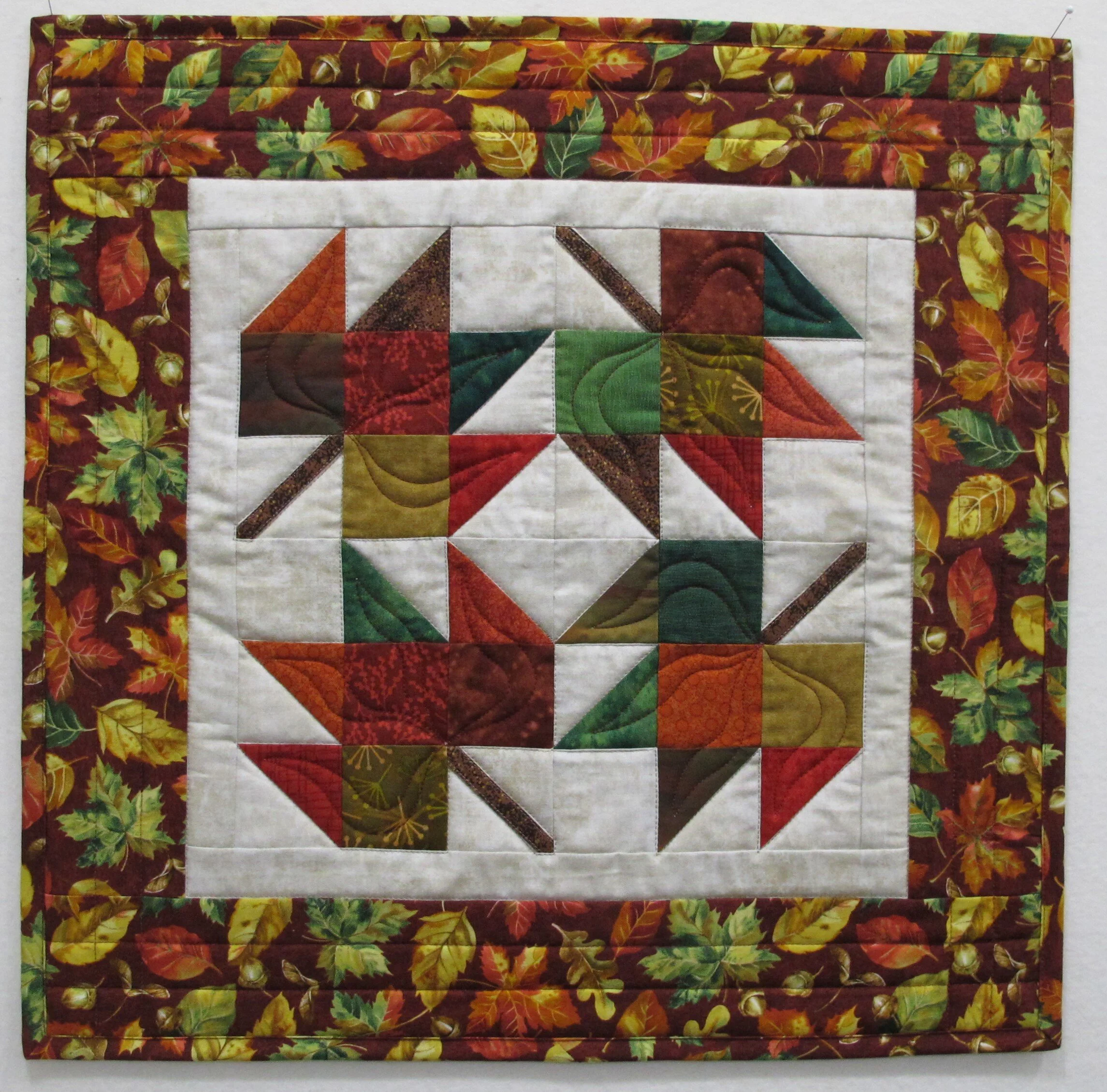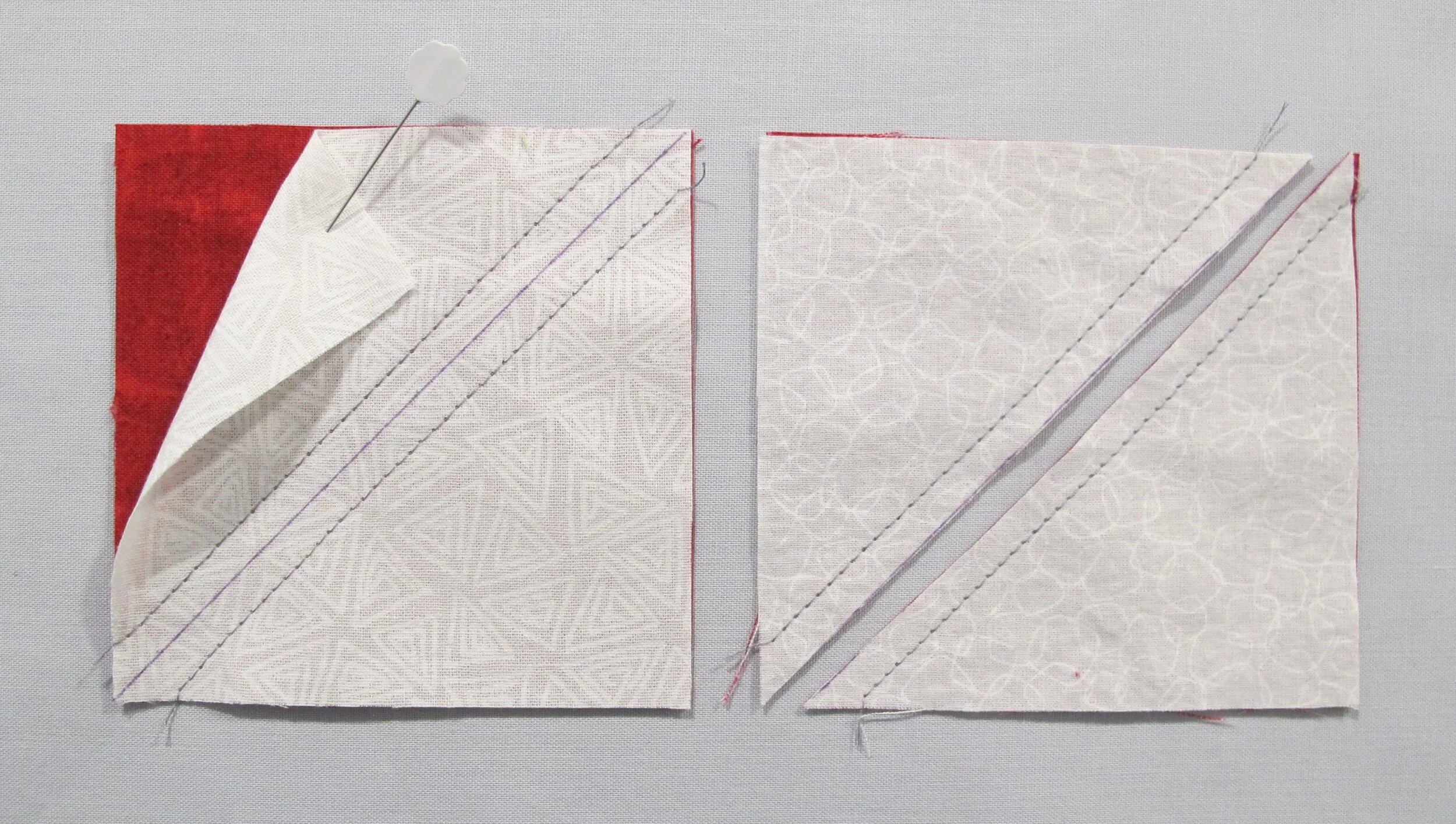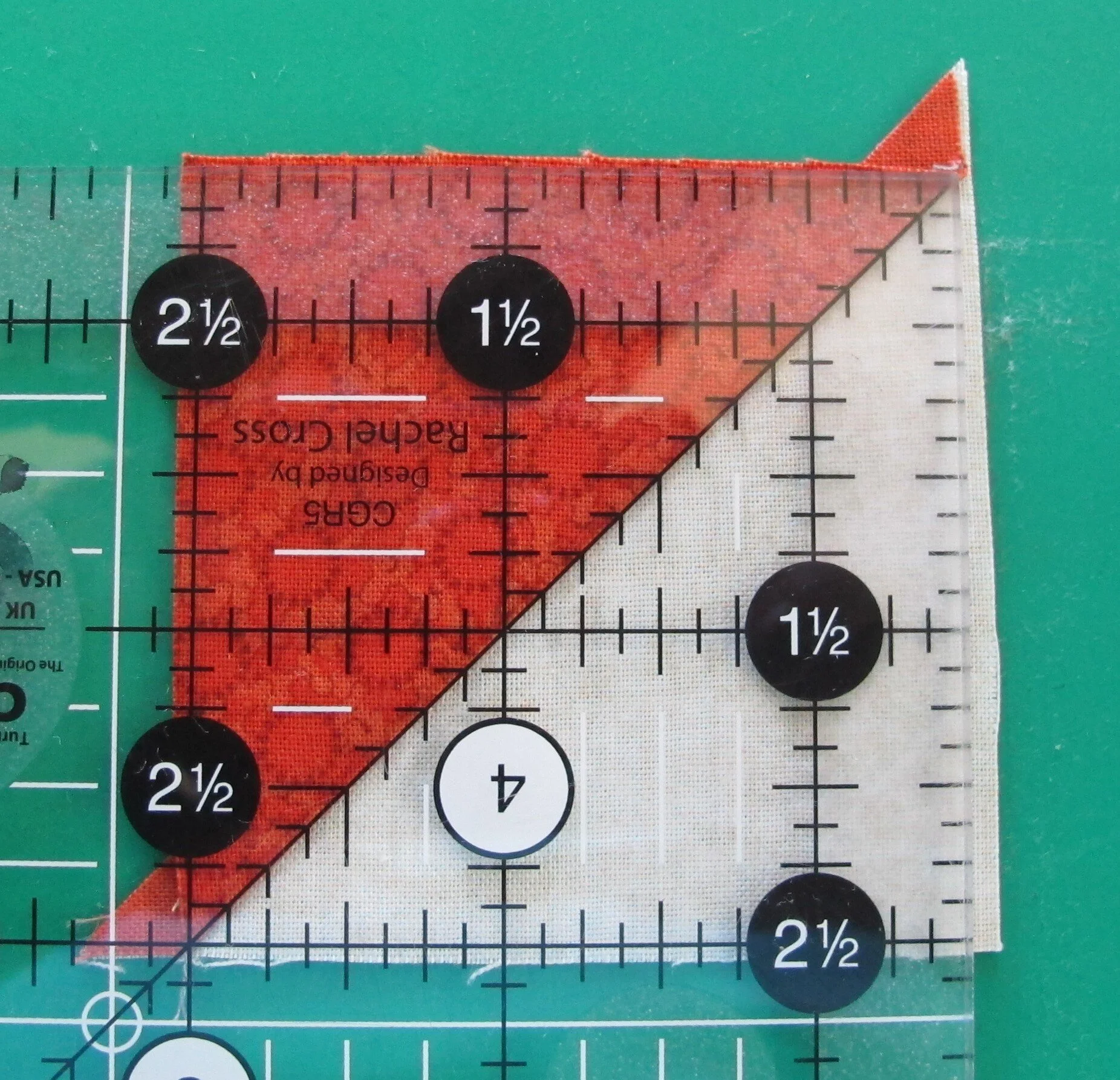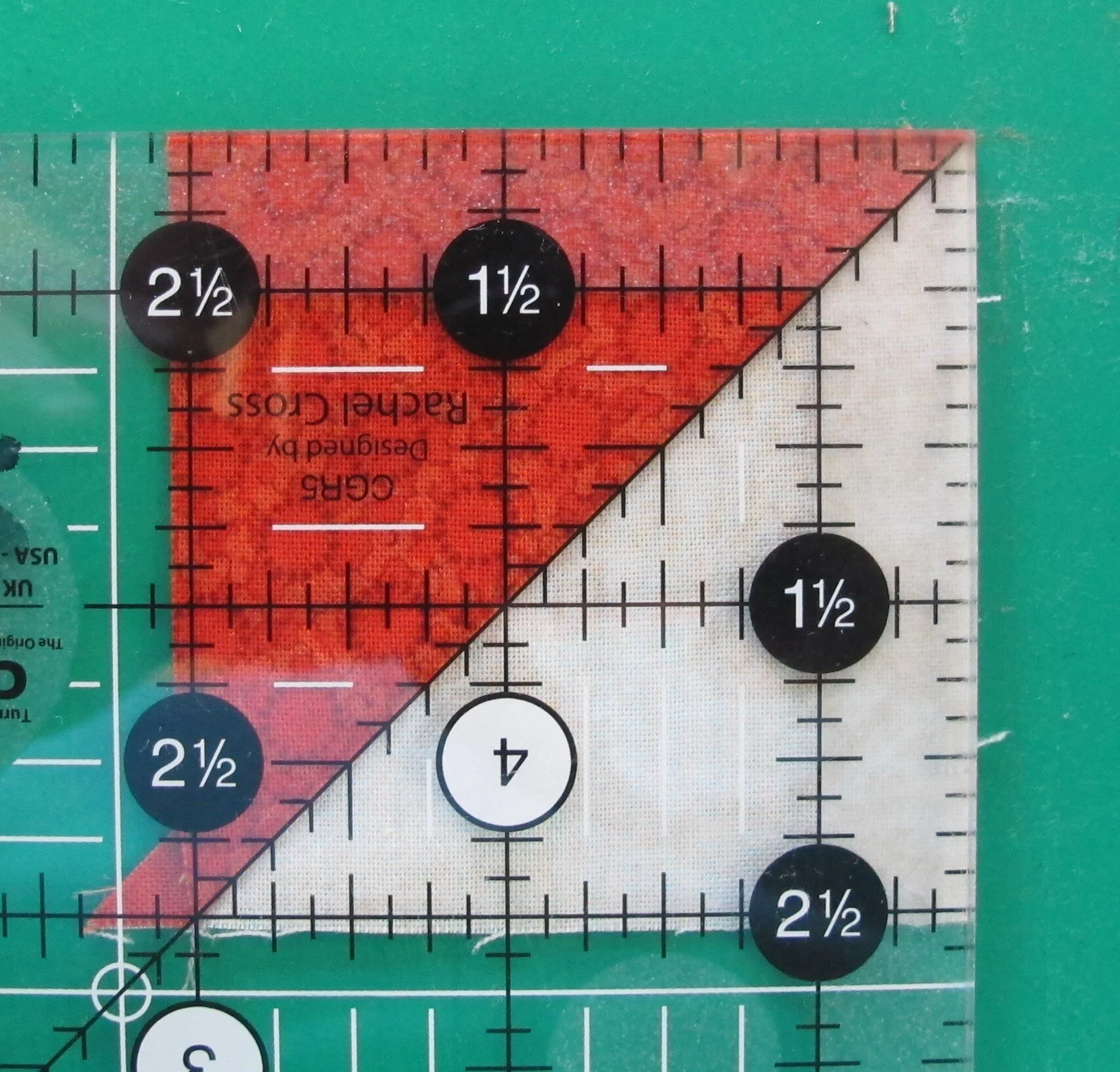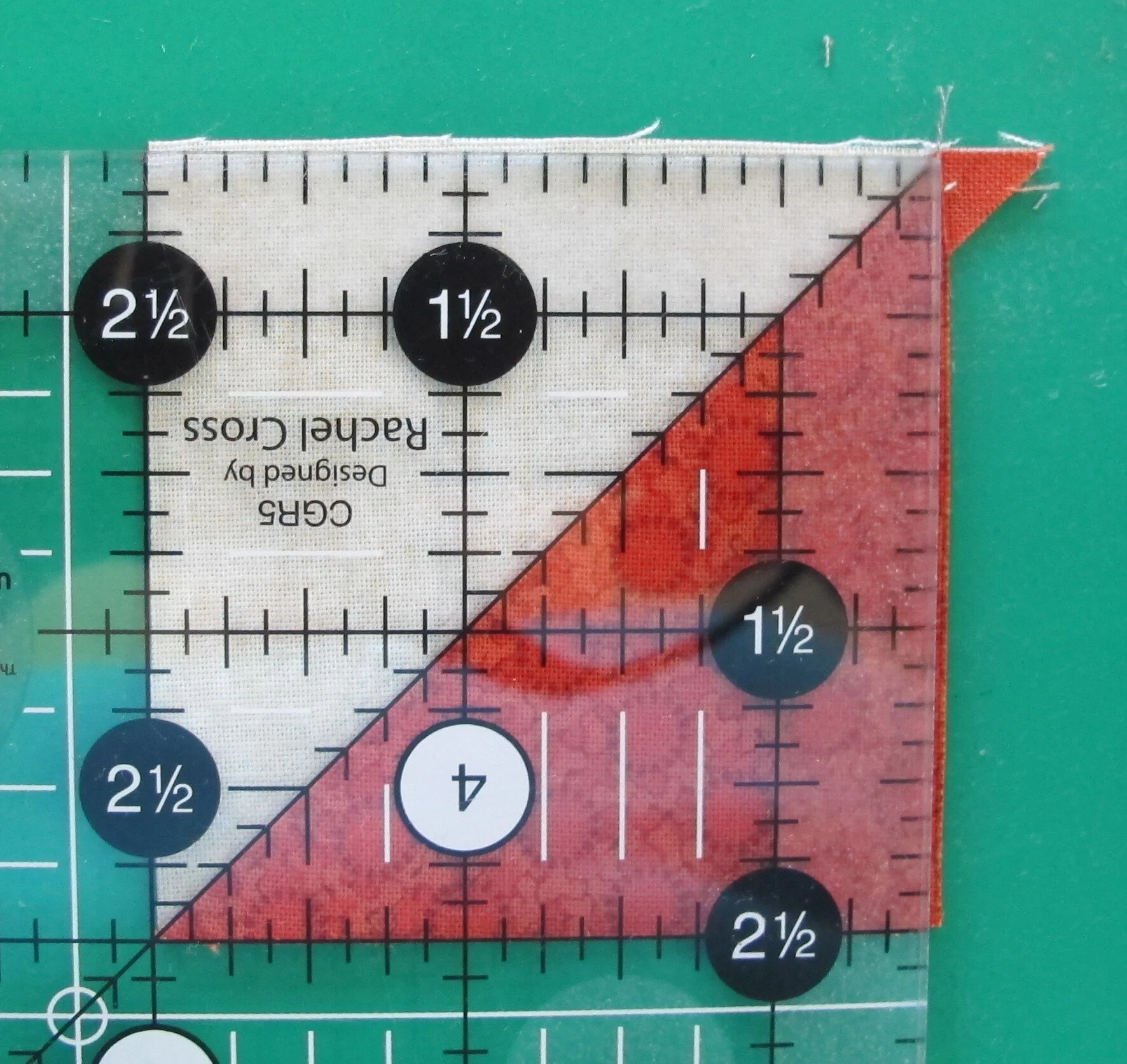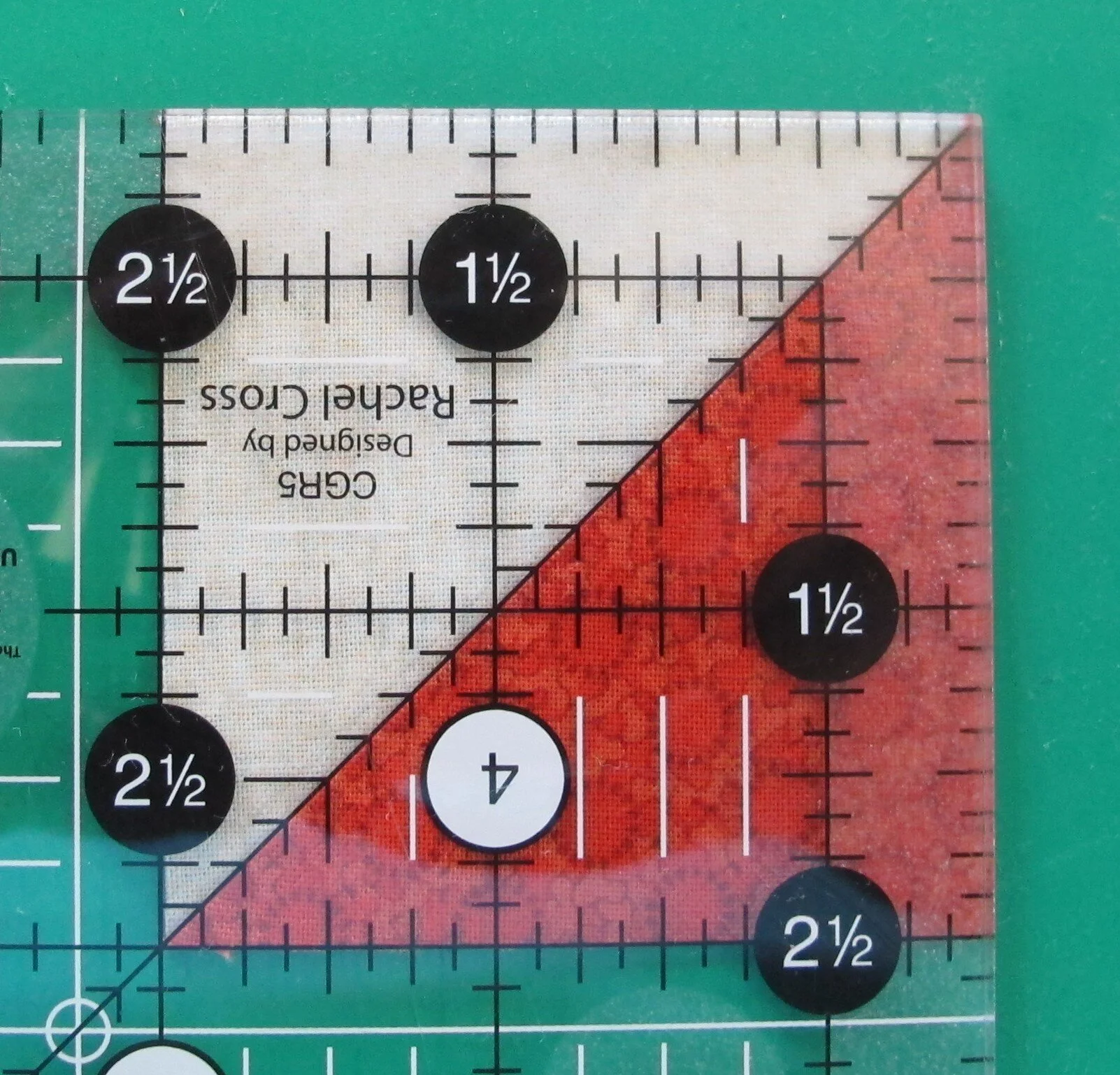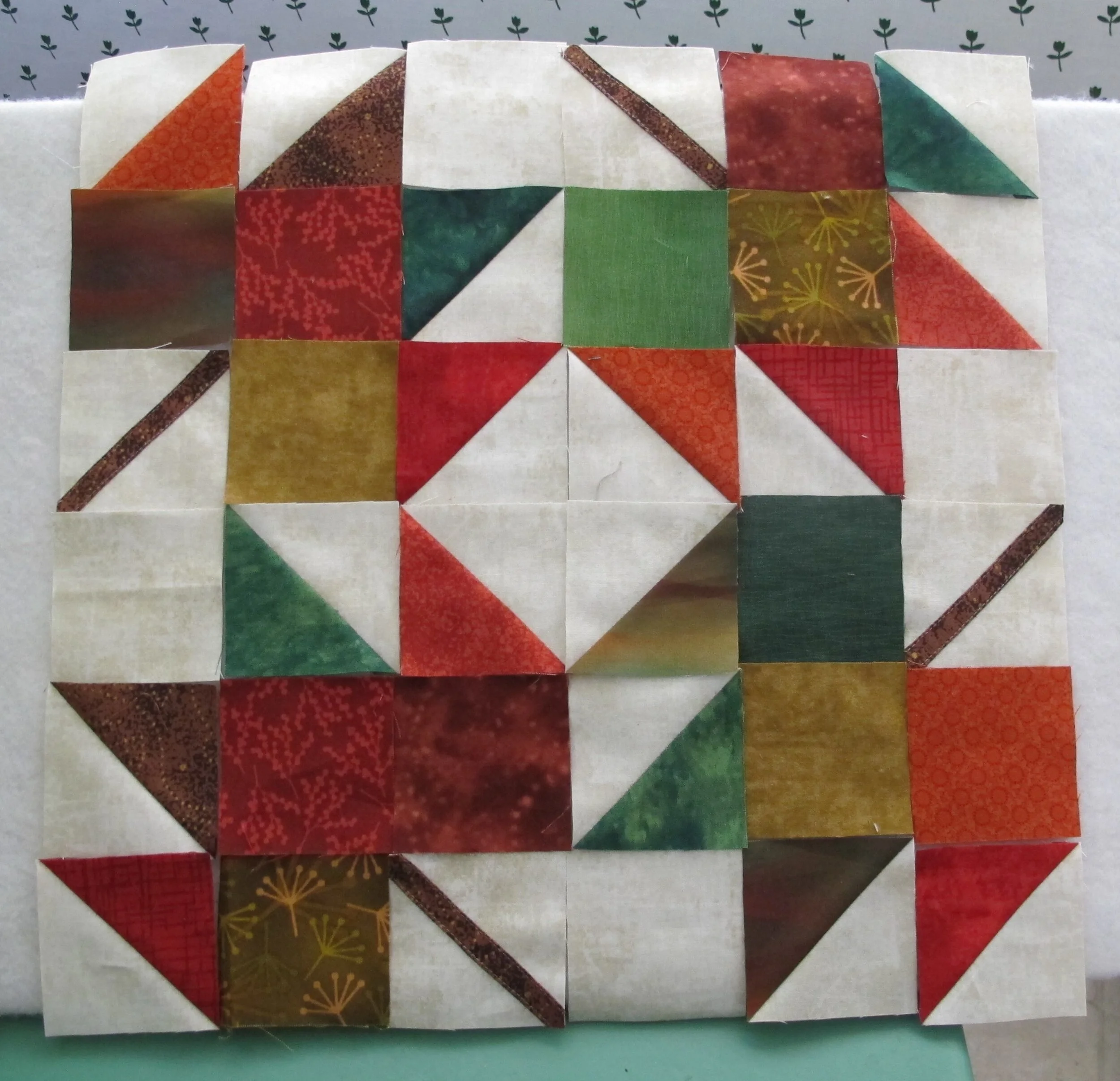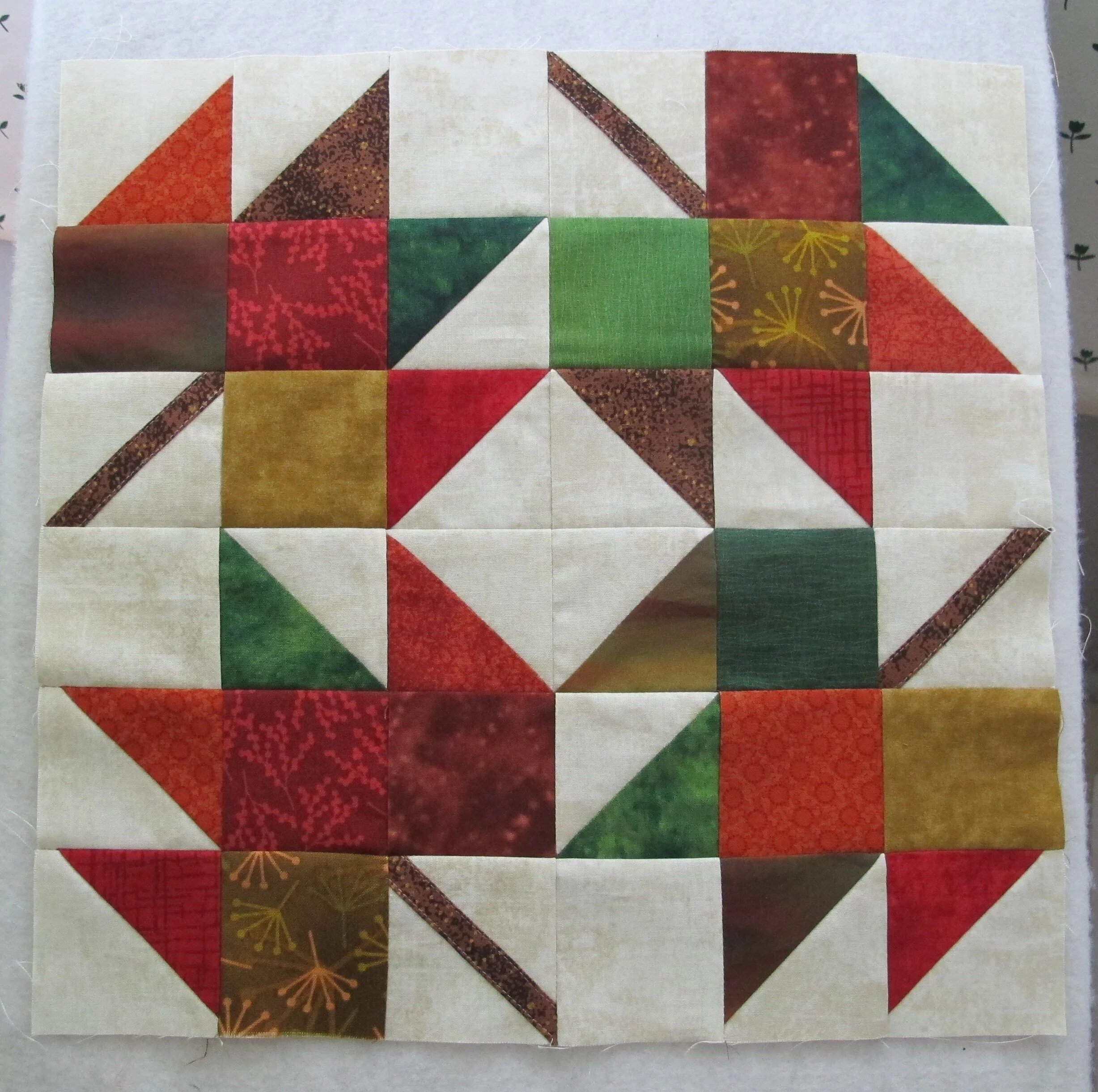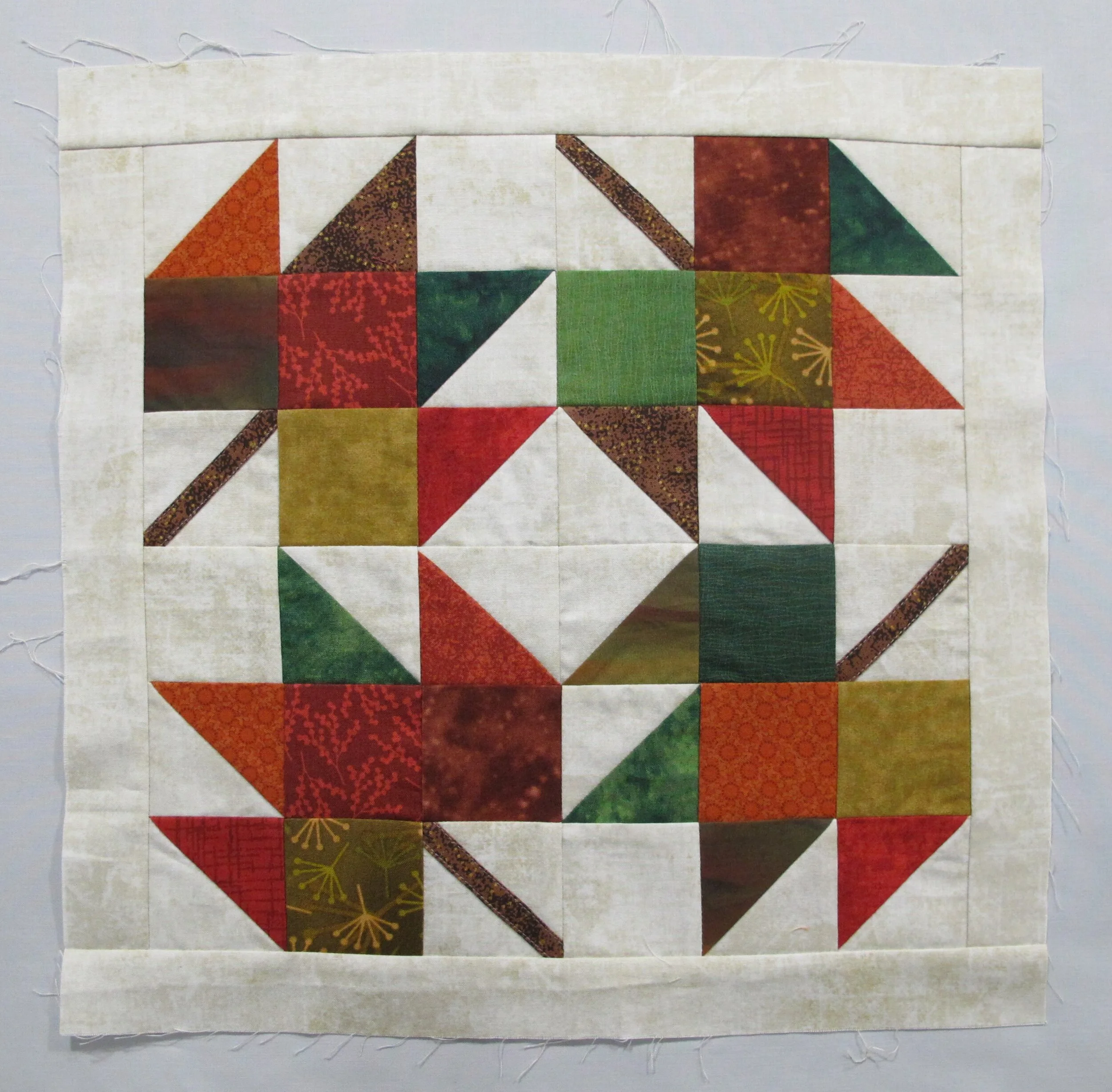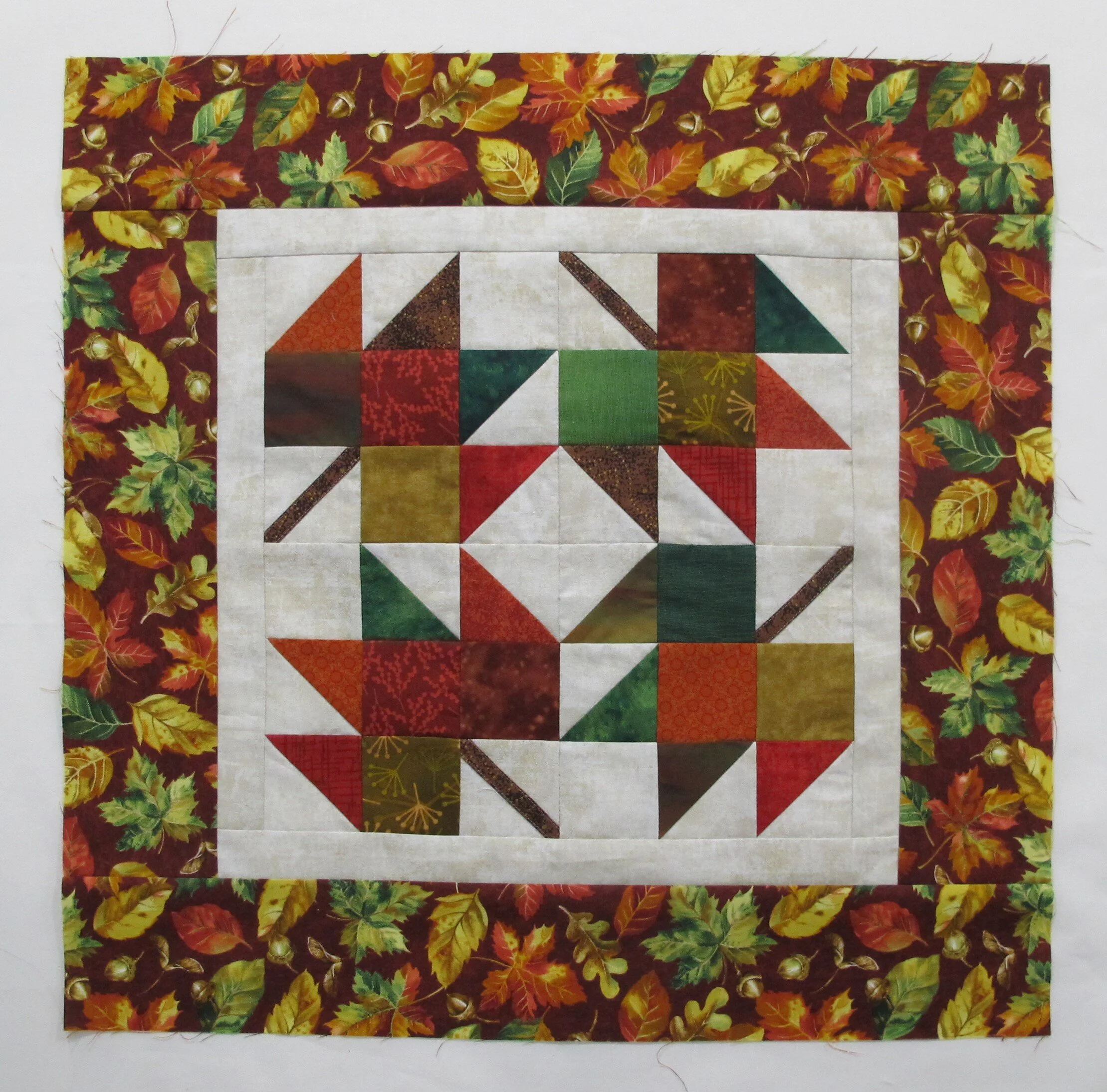November Block- Falling Leaves
There’s a chill in the air! The wind is gusting, the leaves are swirling and it’s time to rake them all up before the snow flies. Welcome November by stitching up these colourful maple leaves in warm autumn tones.
(***scroll to the bottom of the page for a printable PDF version of this pattern)
Cutting Instructions (for one 12” finished block- it will be 12 ½” before sewing on 1 ½” strips):
From a variety of fall coloured scraps:
cut twelve 2 ½” squares
cut eight 3” squares
From background fabric (can be one fabric or a scrappy mix):
cut eight 2 ½” squares
cut eight 3” squares
cut 2 strips 1 ½” x 12 ½”
cut 2 strips 1 ½” x 14 ½”
Cut one ¾” x 14” strip of brown (or four 3 ½” lengths- enough for 4 stems)
Outer border fabric (.25 m / ¼ yd): *** you might not want to cut the outer border lengths until your block is completed with narrow background borders in case seam allowances are not consistent
cut two 3 ½” WOF (width of fabric) strips (cut one 14 ½” and one 20 ½” length from each strip)
Binding: three 2 ½” strips (.25 m / ¼ yd)
Backing: one piece 23” square
Batting: one piece 23” square
Hanging sleeve: one piece 5” x 20 ½”
Sewing instructions:
*** ¼” seam allowances are used throughout. Refer to my Scant Quarter Inch tutorial for your own perfect ¼” seam.
Half Square Triangles (HST's): eight 3” fall coloured squares and eight 3” background squares
draw a diagonal line on the back of all the 3” background squares
with right sides together place a coloured square with a background square and stitch ¼” from both sides of the drawn line (repeat for all 8 sets)
cut them apart along the drawn line and press seam away from the background (figure 1)
Trimming HST's:
line up the diagonal line from the ruler on top of the seam line making sure that the entire 2 ½” area of the ruler is on top of the HST and trim the excess from the right and top of the square (figures 2 & 3)
turn the HST around and place the 2 ½” markings from the ruler on the already trimmed corner and trim the final 2 sides (figures 4 & 5)...repeat with all HST's
figure 2
figure 3
figure 4
figure 5
figure 6
Stems: four 2 ½” background squares and the ¾” x 14” brown strip
press each long edge of the brown strip to the back by ⅛”
cut into 4 equal pieces that are long enough to apply diagonally to each square
centre each brown strip diagonally on top of a background square and edgestitch along each fold (figure 6)
turn each square over and trim the stems even with the edges of the square
Block layout:
lay out the 2 ½” squares, stems and HST's by following the photograph below for placement (figure 7)
stitch squares in each row together and press seams in each row in the opposite direction to the one before it (figure 8)
stitch all rows together lining up seam lines (figure 9)
press seams in one direction
figure 7
figure 8
figure 9
Narrow borders (figure 10):
stitch 1 ½” x 12 ½” background strips to the sides of the block and press seams toward the strips
stitch 1 ½” x 14 ½” background strips to the top and bottom of the block and press seams toward the strips
*** If you plan on making a calendar quilt, just stop with this completed block. If you want to make a wallhanging follow the instructions below.
Outer border:
stitch 3 ½” x 14 ½” outer borders to the sides of the block and press seams toward the borders (figure 11)
stitch 3 ½” x 20 ½” outer borders to the top and bottom of the block and press seams toward the borders (figure 12)
figure 11
figure 12
Finishing:
layer the backing, batting and top together and either spray-baste or pin-baste the layers together
quilt as desired, also run a straight stitch within the seam allowance all around the outer edge...this stabilizes the edge for applying the binding
trim backing and batting even with the quilt top
follow my Hanging Sleeve tutorial
apply the binding using your preferred method (the hanging sleeve will be stitched in place as the binding is sewn on) or follow my Best Ever Binding tutorial

